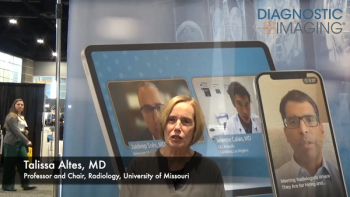
Half Dose of MRI Contrast Provides Equal Image Quality in Rheumatoid Arthritis
Using a half dose of contrast with 3-T MRI for patients with early rheumatoid arthritis shows identical image quality as full-dose.
Magnetic resonance imaging that uses a half dose of gadobenate dimeglumine provides sufficient information to diagnose early rheumatoid arthritis (RA), according to a study published in the journal
Researchers from Austria and Germany investigated the diagnostic value of using a half dose (0.05 mmol per kilogram of body weight) of the contrast agent gadobenate dimeglumine compared with a full dose to assess for synovitis or tenosynovitis in the wrist and joint fingers of people with early RA.
Fifty-seven patients with early RA participated in the study, which took place between August 2009 and September 2011. The patients underwent 3-T MRI with both doses (full and half) of the contrast media of their dominant hand. The contrast level was measured in the inflamed synovial tissue with both doses. A saline syringe was included in the imaging, attached to the fifth finger.
Two blinded readers analyzed the image quality, Rheumatoid Arthritis MRI Score (RAMRIS), and tenosynovitis scores on both half- and full-dose images.
The researchers found that there was a significant difference in signal intensities between the two doses. With the half dose, the mean signal intensity of synovial enhancement was 914.35 compared with the mean of 1,022 from the full dose. “Because the SI showed high correlation between the ratio at half dose and full dose (r = 0.875), the formula, ratio of synovial enhancement to saline syringe at full dose = 0.337 + 1.070 × ratio of synovial enhancement to saline syringe at half dose, can be used to convert the normalized value of half dose to full dose,” the authors wrote.
There was no difference in scores in grading synovitis or tenosynovitis in image quality between half-dose and full-dose images. RAMRIS were the same between both doses: score of 0 in 490 of 1,026 joints; 1 in 344; 2 in 158; and 3 in 34.
The authors concluded that “half-dose gadobenate dimeglumine at 3-T MR imaging may be sufficient for assessing synovitis or tenosynovitis in early RA.”
Newsletter
Stay at the forefront of radiology with the Diagnostic Imaging newsletter, delivering the latest news, clinical insights, and imaging advancements for today’s radiologists.




























